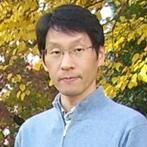Invited Speakers---Dr. Shuji Ogata

Professor, Nagoya Institute of Technology, Japan
Dr. Shuji Ogata, Doctor of Science (Ph.D.-physics), is a professor of department of physical science and engineering of graduate school of the Nagoya Institute of Technology in Japan since 2005. He got his B. Sc. in 1986 from the Univ. of Tokyo, M. Sc. in 1988 from the graduate school of physics of the Univ. of Tokyo, and D. Sc. in 1991 from the graduate school of physics of the Univ. of Tokyo. After two-year post doc. and assistant professor career of the Univ. of Tokyo, he became an associate professor of Yamaguchi Univ. in Japan in 1995. He was awarded: Best technical paper award in supercomputing 2001, Best presentation award of computation mechanics of Japan in 2010, J. Phys. Soc. Jpn. papers award of Editors’ choice in 2014. Excellent Achievement Research Project of High-Performance Computing Infrastructure of Japan in 2015. His current interests include developing and applying various large-scale atomistic simulation codes for various materials on supercomputers and their concurrent hybridization.
Speech Title: Hybrid quantum-classical dynamics simulation of adhesion strength between Al and epoxy in a moist environment
Motivation: The adhesive bonding has become a key technique for automotive manufacturing. The bisphenol-A epoxy resin with curing agent has been used widely as the bonding glue. One of the fundamental open problems in the adhesion between metal and epoxy resin is that the adhesion strength reduces significantly in a moist environment. Although various possible mechanisms due to water have been suggested, such as the increased plasticity of resin, swelling of resin, corrosion of metal, and screened inter-atomic interaction between metal and resin, no detailed explanation exists. Microscopic understanding of the mechanisms is essential to propose an innovative method to solve the problem. The first-principles simulation of such a system is difficult because it requires a large system size due to the inhomogeneity of the interface and largeness of the epoxy molecule.
Methods: We perform the hybrid QM-CL simulation of various aluminum and epoxy resin interface with water molecules inserted in the contact region. In accordance with experimental conditions, the aluminum layer is surface oxidized to a depth of 10 Å while the bisphenol-A type epoxy molecule has both OH and ether groups. About 1,500 atoms at the contact region are treated as the QM region using our original real-space grid DFT code. Shear deformations are applied dynamically to the system.
Results: For the first time, calculated adhesion strengths compare well with the experimental values. Three types of chemical reactions that affect the adhesion strength occur depending on the terminal functional groups of the aluminum oxide surface and the water layer formation. Separate calculations confirm small barrier energies for all the reaction processes.

